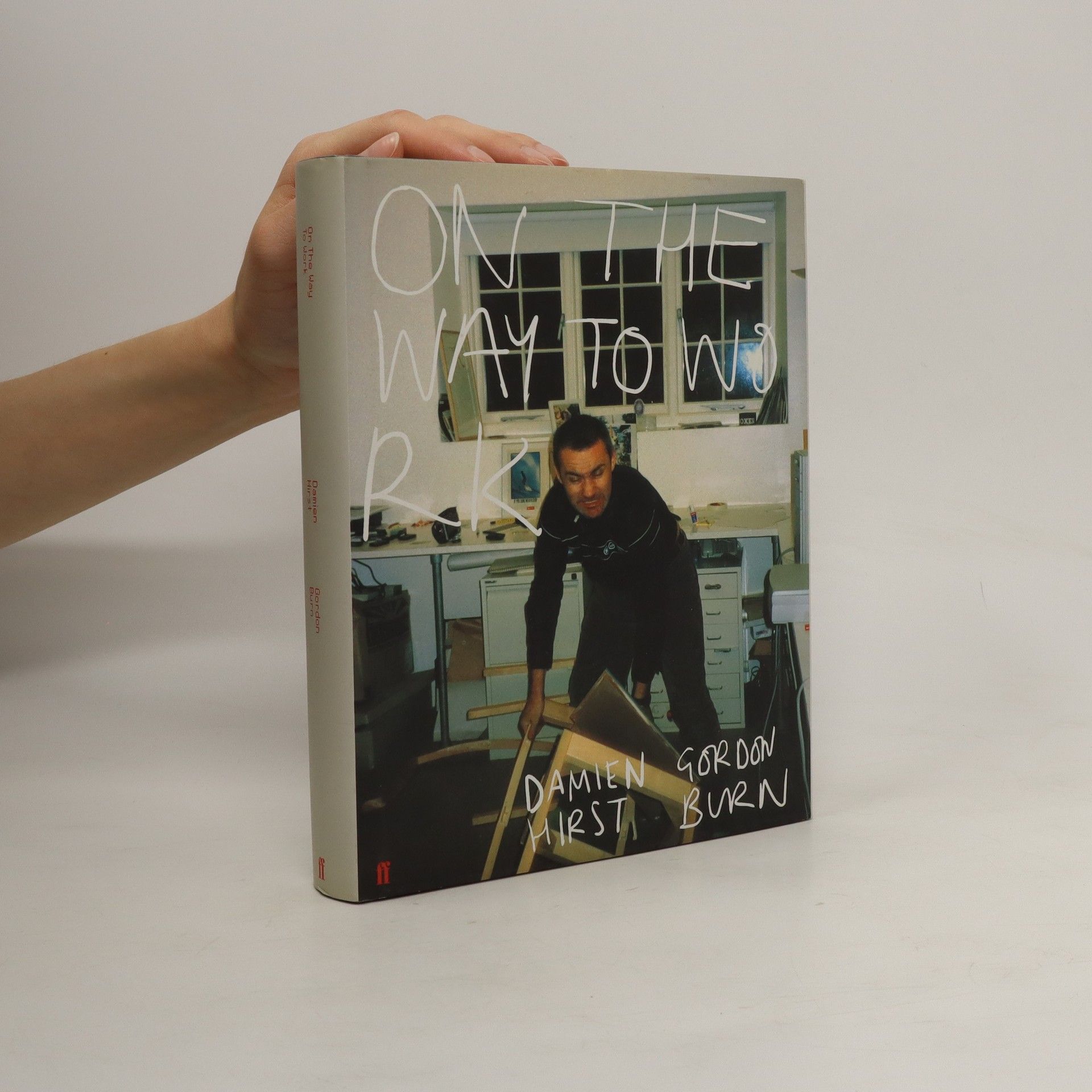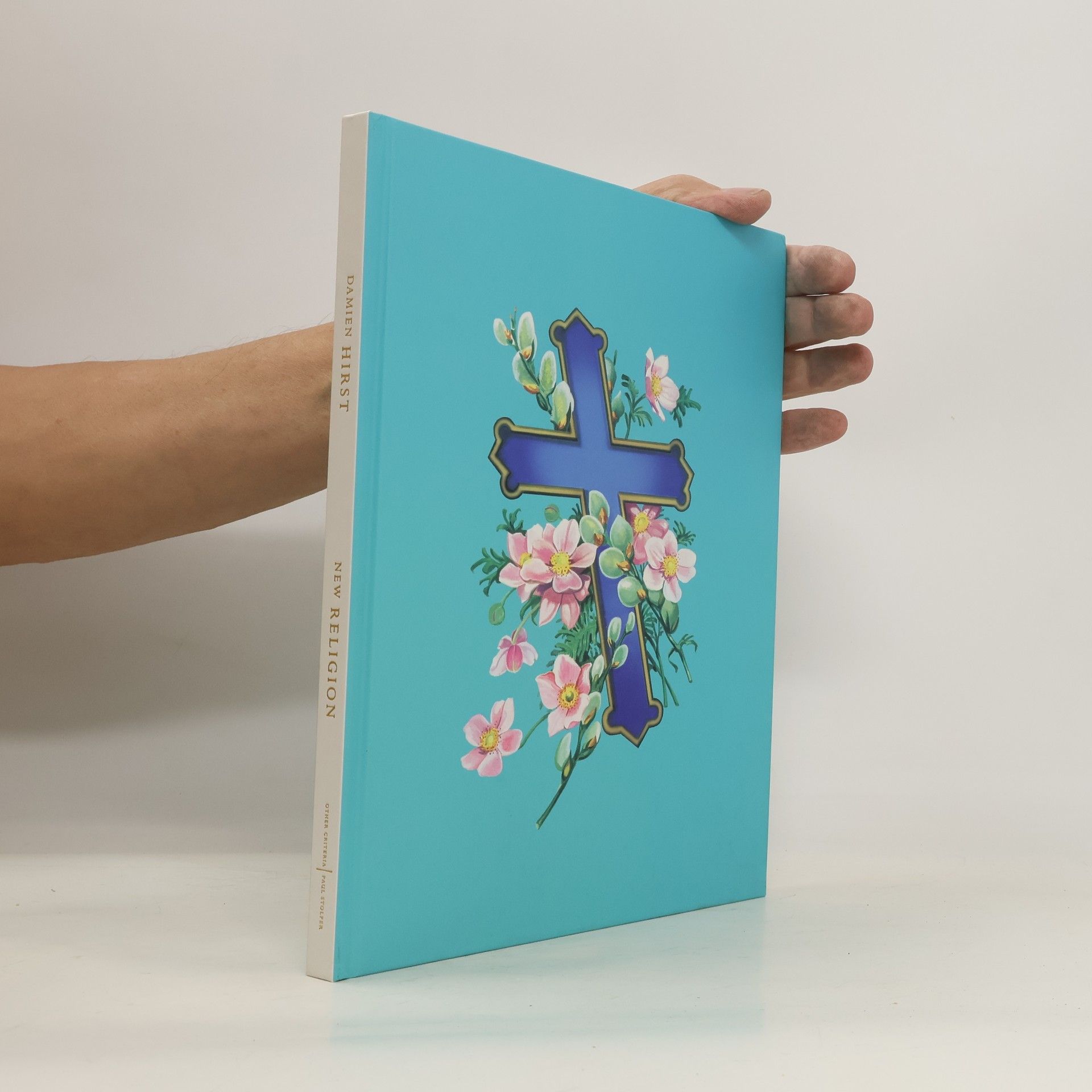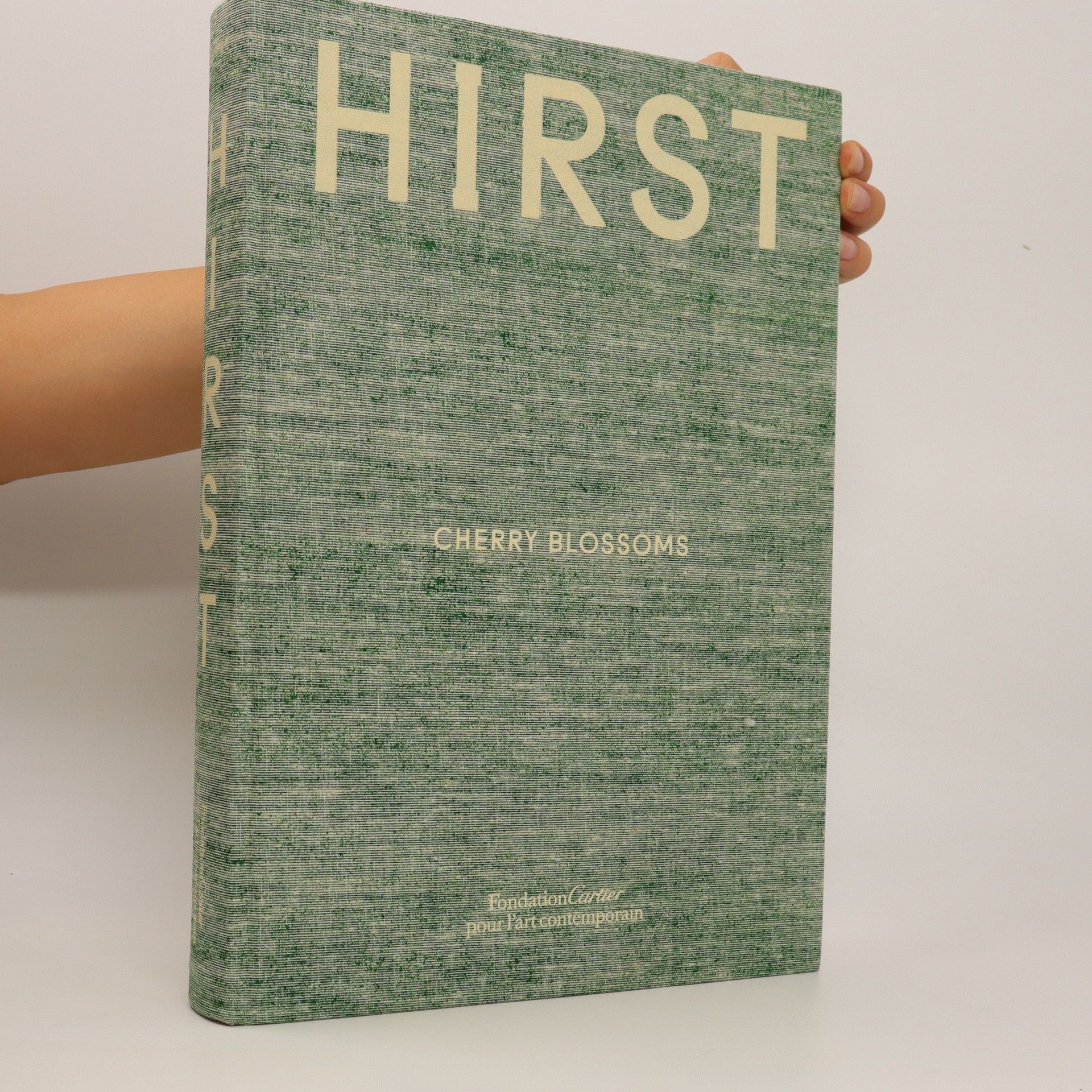Incandescent and celebratory paintings of cherry blossoms from Damien Hirst, in a glorious oversize volume with 18 gatefold spreads With 107 new works, Cherry Blossoms marks a new chapter in Damien Hirst’s career-long exploration of the physical relationship between artist and canvas that began with his Spot Paintings in 1986. Hirst describes his cherry blossoms as "garish and messy and fragile”; the series signals a shift in Hirst’s career away from minimalism and “the imagined mechanical painter” toward a painting that delights in the potential haphazardness of the medium, as well as the artist’s own fallibility as a creator. Rich in color and striking in number, Hirst’s Cherry Blossoms are both an appropriation and a tribute to the pictorial art of the 19th and 20th centuries.Damien Hirst (born 1965) rose to prominence in the 1990s as one of the Young British Artists, garnering attention for his controversial site-specific pieces. A 1989 graduate of Goldsmiths College, Hirst was awarded the Turner Prize in 1995. Now one of the contemporary art world’s most famous figures, Hirst continues to surprise audiences with a staggering diversity of work, ranging from sculpture and painting to installation and performance art. In 2012, a retrospective of his nearly 30-year career was staged at Tate Modern. Hirst is represented by Gagosian.
Damien Hirst Libros






Damien Hirst: From the Cradle to the Grave, Selected Drawings
- 352 páginas
- 13 horas de lectura
The exhibition catalog showcases works from the 25th International Biennale for Graphic Arts held in Ljubljana, Slovenia, highlighting contemporary graphic arts. Organized by Visual Arts and The British Council, the exhibition was displayed at Tivoli Gallery from June to September 2003. It features a diverse array of artists, emphasizing innovative approaches and themes in graphic art, reflecting the dynamic nature of the medium on an international stage.
New Religion
- 96 páginas
- 4 horas de lectura
Published in 2006 following Damien Hirst’s first major print exhibition at the Paul Stolper Gallery in London in 2005, New Religion explores Hirst’s central themes: “I was thinking that there are four important things in life: religion, love, art and science… Of them all, science seems to be the right one now. Like religion, it provides the glimmer of hope that maybe it will be all right in the end.” With full colour reproductions of this entire series of Hirst silkscreen prints produced for the ‘New Religion’ exhibition, such as ‘The Apostles’, ‘The Wound of Christ’, ‘The Last Supper’ and ‘The Stations of the Cross’, as well as editioned sculptures and multiples such as ‘The Fate of Man’ and the ‘box/cabinet’ called ‘New Religion’, this hardback publication is a modern day biblical picture-book exploring combinations between science and religion. And the ideas about Hirst’s science/religion dichotomy are further explored through an intriguing interview with Sean O’Hagan that moves effortlessly from the macro to the micro, and back again, “I just can’t help thinking that science is the new religion for many people. It’s as simple and as complicated as that really.” Hardback with 6 gatefolds.
On the Way to Work
- 224 páginas
- 8 horas de lectura
"I want it to be revealing. I'll talk about anything you like. I want it to be truthful. Let's do it. There is no off-limits. I'm afraid of nothing." Recognized as a young artist with a brilliant and uncompromising imagination, Damien Hirst stands as Britain's most celebrated artist for generations. As the leader of a dominant movement in contemporary art, he is ingrained in public consciousness, known for his notorious shark and pickled sheep. Gordon Burn first met Hirst nine years ago, sharing a mutual admiration for influential interviews with artists. Their resulting conversations are electrifyingly candid, with Hirst offering unfiltered insights into celebrity, money, art, alcohol, sex, death, class, and more. He shares his views on notable figures like Marco Pierre White, Charles Saatchi, and David Bowie. Hirst's art and life defined the nineties, and this work captures the essence of a generation—brave, unpredictable, scabrously funny, and corrosively intelligent. It serves as a how-to guide for those aspiring to become the most famous artist in the world.
This book is a creative guide to the making of arguably the most extraordinary art object to be made in the 21st century. Published to accompany the 2007 exhibition "Damien Hirst: Beyond Belief" at White Cube, it gives a fascinating pictorial insight into how Hirst's diamond skull piece "For the Love of God" was conceived and produced. Illustrated with candid behind-the-scenes photographs by Johnnie Shand Kydd, the book includes a number of preparatory drawings by Damien Hirst and a fold-out image of the diamond skull. Accompanying this is an essay by the art historian Rudi Fuchs, who writes, "The skull is out of this world, celestial almost. I tend to see it as a glorious intense victory over death." A number of leading experts in the fields of archeology and dentistry have also contributed detailed studies on the diamond skull, including analyses of its age and ancestry.
Candy
- 52 páginas
- 2 horas de lectura
The visual candy paintings' were made between 1992 and 1994. The works showcase the ways in which Damien Hirst used the signifier of candy during the early 1990’s, exploring questions of pure aesthetics. Addressing the viewer on a deliberately emotional and instinctive level, these works, abetted by their exuberant titles, among them Some Fun (1993) and Dippy Dappy Dabby (1993), set out to question the implication that aesthetically pleasing art is inherently insignificant.0.
Damien Hirst Colouring Book
- 56 páginas
- 2 horas de lectura
Damien Hirst: Colouring Book features the British artist's most iconic works rendered as simple line drawings. Coloring fans of all ages can immerse themselves in themes and motifs found within some of the artist's most enduring series, including anatomical models, butterflies, medicine cabinets, spin paintings, color charts and kaleidoscope paintings. Featuring Hirst's most popular images, including "The Incomplete Truth," "Myth," "Loving in a World of Desire," "Hymn," "For the Love of God," "Benevolence" and more, the volume brings some of the most controversial and groundbreaking work of contemporary art to a witty coloring-book format.
"A revealing collection of quotations from world-renowned artist Damien HirstHirst-isms is a collection of quotations-bold, surprising, often humorous, and always insightful-from celebrated artist Damien Hirst, whose controversial work explores the connections between art, religion, science, life, and death. Emerging in the 1990s as a leading member of the Young British Artists (YBAs), Hirst first became famous and gained a reputation as a provocateur with a series of artworks featuring dead and sometimes dissected animals (including a shark, sheep, and cow) preserved in glass tanks filled with formaldehyde.Gathered from interviews and other primary sources and organized by subject, these quotations explore Hirst's early years, family life, and the beginnings of his fascination with art; the major themes of his work; his influences and heroes; his motivation; his process and the boundary-pushing production of his work; and his thoughts on the art world, fame, and money. The result is a comprehensive and nuanced book that sheds new light on a fascinating and important contemporary artist.Select quotations from the book:"The less I feel like an artist, the better I feel.""I like it when people love my art. I like it when people hate my art. I just don't want them to ignore my art.""Painting's like the most fabulous illusion, because there's nothing at stake. Except yourself.""I'm interested in the confusion between art and life, I like it when the world gets in the way.""Sometimes you have to step over the edge to know where it is.""-- Provided by publisher
An alphabet book illustrated by the artwork of Damien Hirst.
In 2005 Damien Hirst began photographing every dispensing pharmacy in the Greater London area. Shooting both the individual pharmacists behind their counters and the exterior views of the city’s 1,856 chemists, the project took over a decade to complete. The images are brought together in their entirety in this extraordinary ten-volume artist’s book, which presents a portrait of the city through the people and places that prescribe the medicines we take on a habitual and daily basis. Hirst’s career-long obsession with the minimalist aesthetics employed by pharmaceutical companies—the cool colors and simple geometric forms—first manifested in his series of Medicine Cabinets, conceived in 1988 while still at Goldsmiths College. For his 1992 installation Pharmacy Hirst recreated an entire chemist within the gallery space, stating: “I’ve always seen medicine cabinets as bodies, but also like a cityscape or civilization, with some sort of hierarchy within it. [Pharmacy] is also like a contemporary museum. In a hundred years it will look like an old apothecary.” Pharmacy London similarly embodies the artist’s realization of an “idea of a moment in time.” The publication also, however, reads as a distilled expression of Hirst’s continuing belief in the near-religious role medicine plays in our society. Limited edition of 750 boxed sets
